| Columns Retired Columns & Blogs |
ProAc Future One loudspeaker Measurements
Sidebar 3: Measurements
The ProAc Future One was measured using my standard combination of a DRA Labs MLSSA PC card with a calibrated B&K 4006 microphone for the acoustic measurements, and an Audio Precision System One for the impedance. The ProAc's impedance curves (fig.1) revealed the speaker to be a relatively benign load over much of the audioband, its resistance dropping below 5 ohms for only brief periods in the upper bass and midrange. However, a potentially demanding combination of 5.5 ohms magnitude and a 45º capacitive phase angle at 79Hz means tube amplifiers would best be used from their 4 ohm taps. The speaker's sensitivity was average at 86dB(B)/2.83V/m, inconsequentially lower than the specified 87dB.
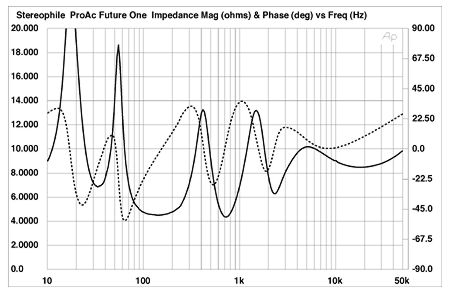
Fig.1 ProAc Future One, electrical impedance (solid) and phase (dashed). (2 ohms/vertical div.)
The Future One's impedance traces are free from resonance-related wrinkles, and a cumulative spectral-decay plot calculated from the output of a simple accelerometer fastened to the center of a sidewall (fig.2) revealed no significant vibrational modes.
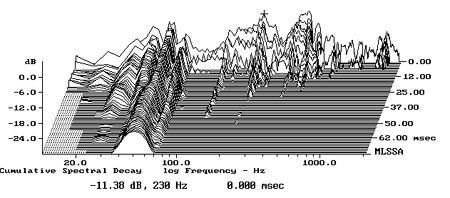
Fig.2 ProAc Future One, cumulative spectral-decay plot calculated from the output of an accelerometer fastened to the cabinet sidewall. (MLS driving voltage to speaker, 7.55V; measurement bandwidth, 2kHz.)
The saddle at 36Hz in the impedance magnitude trace indicates the tuning of the downward-firing port. Not coincidentally, this is the frequency of the minimum-motion point in the woofer's response (fig.3). The port's output peaks a little higher in frequency, however, and while there is some midrange spikiness in the port response, this is both well down in level and will be further suppressed by the fact that the port faces the floor. The woofer appears to cross over to the open-baffled midrange unit at around 350Hz with approximately symmetrical filter slopes. However, note the sharp discontinuity in the midrange driver's output between 1kHz and 2kHz. I suspect that this behavior underlies the coloration noted by MF in his auditioning. Certainly I could also hear some slight cupped-hands coloration in the speaker's presentation, which grew very much more pronounced when I moved behind the speaker. This behavior reminds me of the large Acarian Alón speakers, which feature similar dipolar midrange-unit mountings.
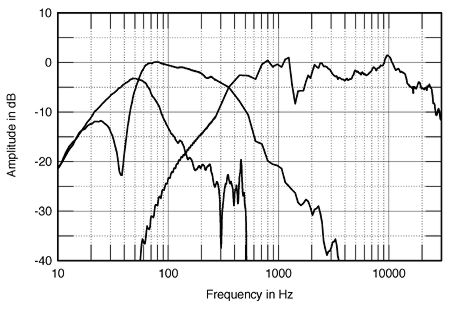
Fig.3 ProAc Future One, acoustic crossover on tweeter axis at 50", corrected for microphone response, with the nearfield woofer and port responses plotted below 300Hz and 1kHz, respectively.
Fig.4 reveals how these individual responses sum on the tweeter axis at a microphone distance of 50", averaged across a 30º horizontal window. The upper-midrange discontinuity is again readily apparent. The tweeter range seems slightly shelved-down, with a slight peak at 10kHz before a prematurely rolled-off top octave. The rise in the bass is partly due to the nearfield measurement technique, which assumes a 2pi environment for the drive-units. But the midbass region did sound a little elevated during my measurements.
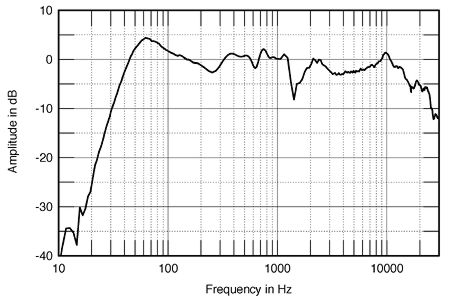
Fig.4 ProAc Future One, anechoic response on-axis at 50", averaged across 30º horizontal window and corrected for microphone response, with the complex sum of the nearfield woofer and port responses plotted below 300Hz.
The Future One's lateral dispersion is shown in two ways: fig.5 shows the speaker's actual response, plotted at 5º intervals from 90º off-axis on one side of the tweeter axis to 90º on the other side; fig.6 shows just the differences between the off-axis responses and the response on the tweeter axis (which thus appears as a straight line). The cursor in fig.6 reveals a sharp off-axis notch in the octave between 300Hz and 600Hz, presumably due to the dipolar mounting of the midrange unit. But the top two octaves of the midrange unit's passband show relatively uniform dispersion, and the crossover to the wide-dispersion tweeter is quite seamless. Fig.5 shows that the upper-midrange discontinuity in the on-axis behavior persists off-axis, which perhaps explains why MF and I found the coloration ubiquitous.
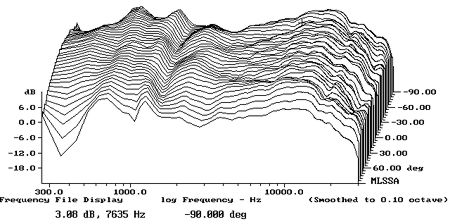
Fig.5 ProAc Future One, lateral response family at 50", from back to front: responses 90º–5º off-axis, reference response on tweeter axis, responses 5º–90º off-axis.
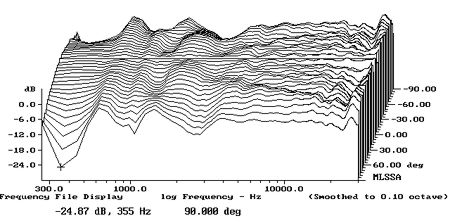
Fig.6 ProAc Future One, lateral response family at 50", normalized to response on tweeter axis, from back to front: differences in response 90º–5º off-axis, reference response, differences in response 5º–90º off-axis.
The overall tweeter output in the forward direction gently rises between 3kHz and 12kHz, which, coupled with the seamless join between the tweeter's wide dispersion and that of the midrange unit, will tend to make the speaker's in-room HF balance sound natural. In the vertical plane (not shown), the tweeter's top octave doesn't roll off so readily above that axis. Although the tweeter axis is a relatively high 41" from the floor, a notch develops in the mid-treble if you sit lower than the midrange-unit axis.
Despite its sloped-back baffle, the Future One is not time-coherent. Its step response (fig.7), for example, shows the tweeter's inverted output arriving a fraction of a millisecond before the midrange unit's (also inverted), which then smoothly blends into the positive-polarity step from the woofer. The waterfall plot on the tweeter axis (fig.8) reveals a very clean output and a quick uniform decay in the tweeter's passband. The upper-midrange discontinuity, however, is associated with some significant delayed energy, which is perhaps due to reflection of the backwave and the resultant interference rather than a resonance per se. Whatever the reason, the resultant slight cupped-hands coloration lets down what would otherwise be a very promising design.—John Atkinson
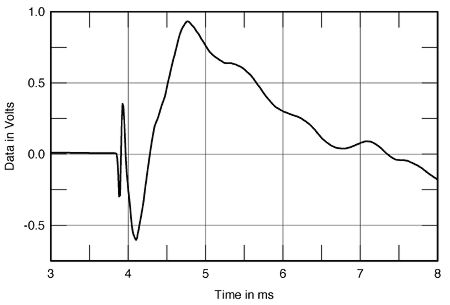
Fig.7 ProAc Future One, on-axis step response at 50" (5ms time window, 30kHz bandwidth).
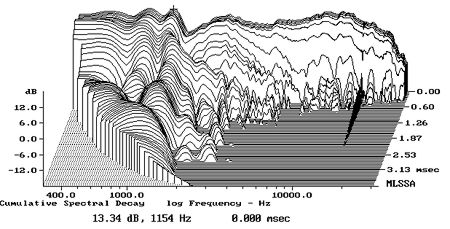
Fig.8 ProAc Future One, cumulative spectral-decay plot at 50" (0.15ms risetime).
- Log in or register to post comments




































